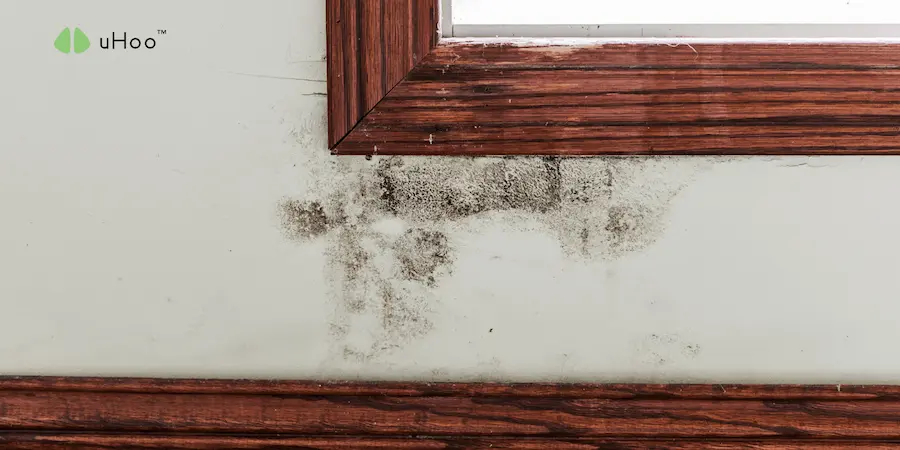When humidity is high, the question isn’t if mold can grow, but when and where. Mold spores are always present, just waiting for the right conditions. Learning how to tackle mold proactively before it becomes a visible nightmare and starts polluting your indoor air is therefore essential for a healthy home.
Here’s your comprehensive guide on how to tackle mold and keep your indoor air clean:
- Identify and Control Moisture Sources (The Root Cause): This is the single most important step on how to tackle mold. Mold cannot grow without moisture.
- Fix Leaks Immediately: Check for leaky pipes, roofs, or appliance hoses regularly. Even small drips can create a mold problem quickly.
- Manage Condensation: Ensure good insulation around pipes. If windows frequently fog up, improve air circulation or consider more energy-efficient windows.
- Address High Indoor Humidity: In the tropics, this is paramount. Your uHoo monitor will tell you if your Relative Humidity (RH) is consistently above 60%. Use dehumidifiers in damp areas like basements, closed-off rooms, or even large living spaces if needed.
- Improve Ventilation (Expel Damp Air): Stagnant, humid air is a mold incubator.
- Use Exhaust Fans: Always run kitchen exhaust fans when cooking (especially boiling or steaming) and bathroom fans during and for 15-20 minutes after showers. These pull moisture-laden air directly outside.
- Strategic Air Exchange: Even with the AC on, open windows and doors for 5-10 minutes periodically (when outdoor air quality and humidity are lower) to flush out stale, damp air. This is vital in sealed, air-conditioned homes.
- Ensure Good Airflow: Don’t block vents. Use ceiling fans or standing fans to circulate air, especially in areas prone to dampness.
- Maintain Your AC and Other Appliances:
- Clean AC Filters Regularly: Dirty filters restrict airflow and can become breeding grounds for mold. Clean or replace them monthly in our humid climate.
- Check AC Drip Pans and Coils: Ensure the drip pan is draining properly and is free of standing water. Have your AC coils professionally cleaned periodically to remove built-up grime that harbors mold.
- Maintain Clothes Dryers: Ensure dryer vents are clean and exhaust directly outside, not into your attic or indoor space.
- Clean Up Minor Mold Growth Promptly (If Already Present): For small areas (less than 10 square feet, or roughly 1 meter by 1 meter) on non-porous surfaces like tiles or painted walls, you can clean it yourself:
- Wear Protection: Gloves, N95 mask, and eye protection.
- Use a Proper Cleaner: A mixture of water and detergent is often sufficient. For tougher spots, a diluted bleach solution (no more than 1 cup bleach per gallon of water) can be used on non-porous surfaces, but test first and ensure good ventilation. Never mix bleach with ammonia or other cleaners though!
- Dry Thoroughly: The most crucial step on how to tackle mold is to ensure the area is completely dry after cleaning to prevent immediate regrowth.
- Address Porous Materials and Large Infestations Professionally: If mold is on porous materials (drywall, carpet, insulation), or if the area is larger than 10 sq ft, it’s best to call a professional mold remediation specialist. These materials often need to be removed and replaced, and large infestations require specialized equipment and containment to prevent spore spread.
A uHoo air quality monitor is your best friend in learning how to tackle mold. Its precise humidity sensor will immediately alert you to high RH levels, giving you the earliest possible warning sign. It also monitors VOCs (which can be released by mold) and PM2.5 (which includes airborne mold spores), and provides a helpful uHoo Mold Index.
By continuously monitoring these parameters, uHoo helps you identify potential problems before they become visible, allowing you to take action and maintain a mold-free, healthy indoor environment.

